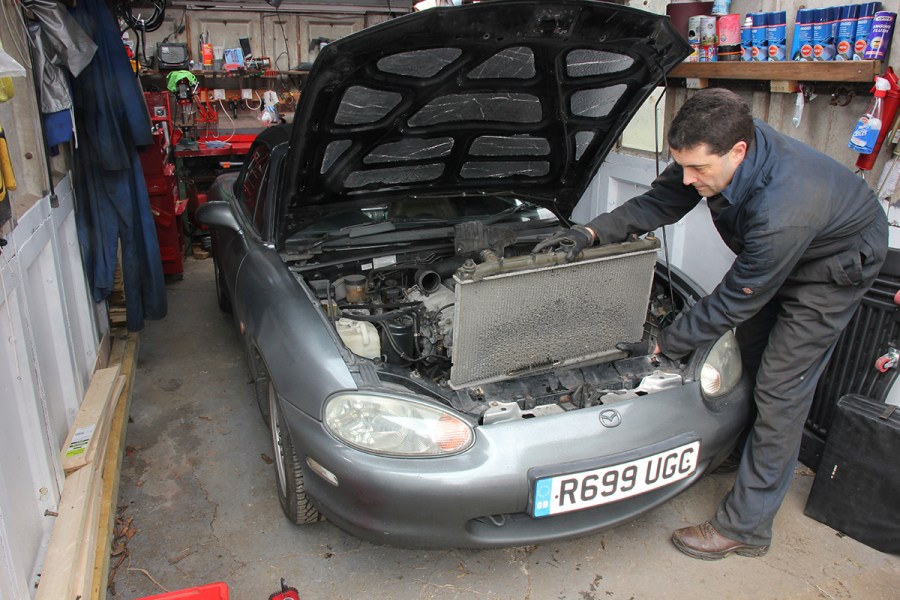Follow our guide on how to change a car radiator to help discover the typical problems that can arise.
A car radiator is an essential component to help maintain the temperature of the engine. Most of them are mounted in the front of the engine bay. Consequently, they can get damaged by road debris and may eventually leak. Some parts of the radiator may corrode and then leak, so eventually it will be time to replace the radiator. Fitting a new radiator may be the best answer, so check out our guide to the best car radiators. That being said, some radiator specialists can re-core an old one. This may be the only solution if a new radiator isn’t available.
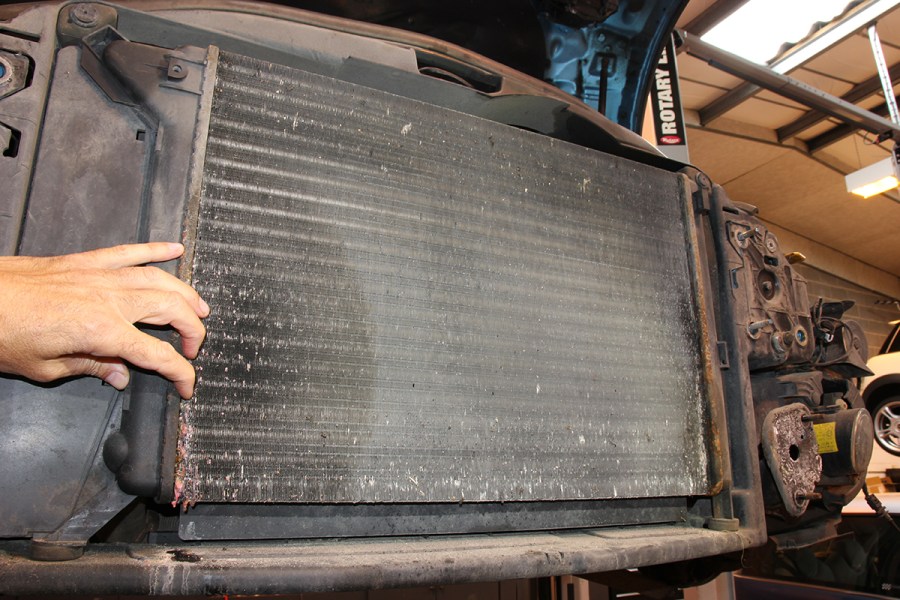
How to tell your car radiator needs changing
Look across the surface of the radiator for signs of damage. You probably won’t be able to inspect all of the radiator (look through the front grille or bumper). From what you can see of it, look for crushed cooling fins and coolant residue. Any residue may indicate the radiator is leaking.
If the radiator is blocked with silt, this problem will be difficult to identify. It could mean the engine runs hot or overheats. Removing the radiator’s top and bottom hoses, then attaching a hosepipe to the top will help. If the radiator is choked with silt, the hosepipe water will struggle to run out.
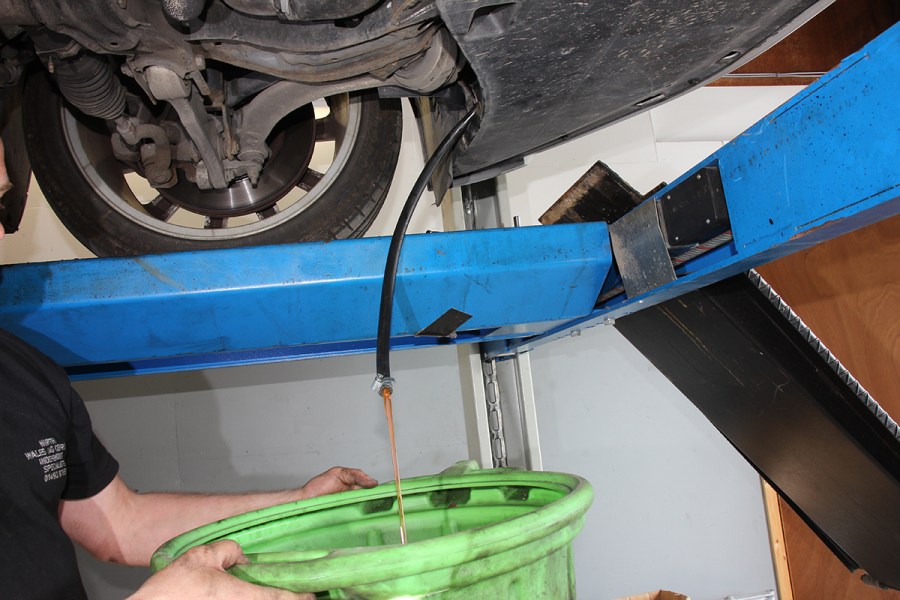
1. Drain the coolant from the radiator
The first job in changing the radiator is to drain the coolant. This will make it easier to remove the radiator and save you getting wet. If you want to reuse the coolant, it needs to be collected in a clean container. In all cases, collect it and do not pour it down a drain. It must be disposed of safely at your local recycling center because it contains harmful chemicals.
Some radiators have a drain tap along the bottom. Fitting a hose to the tap, as shown here, will help with directing the coolant into a container. Release the radiator pressure cap and any other caps to help with draining.
If no drain tap can be found, undo the lower hose attached to the radiator. Carefully ease it off and only do this when the engine is cold. The coolant will surge out, so have a large container ready to collect the fluid.
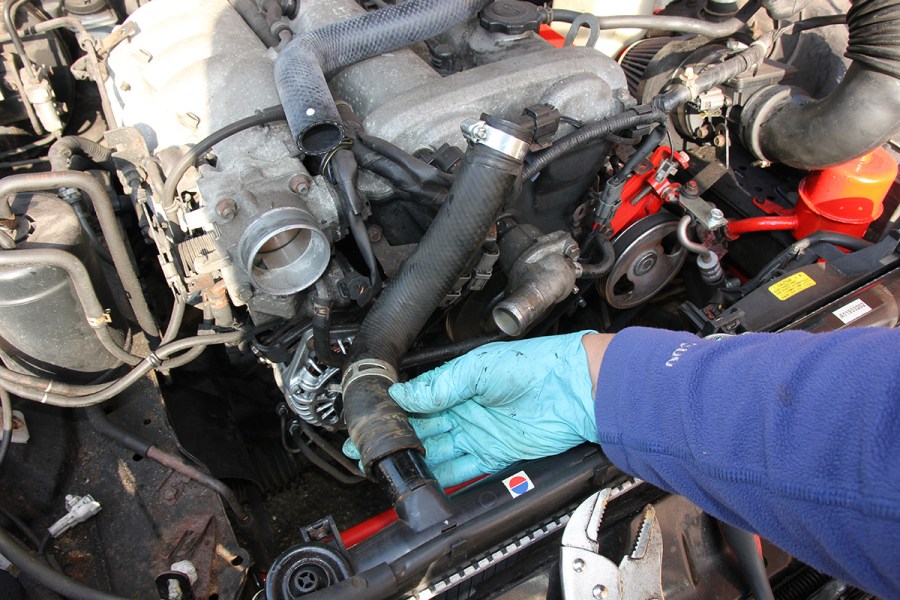
2. Detach all hoses from car radiator
Once the coolant from the radiator has been drained, look for any remaining hoses that are still attached to it. Detach all of them. In some cases, it may be easier to detach a hose from elsewhere, leaving it connected to the radiator. Access to hose clamps may be difficult, so work out the easiest way to help remove the radiator.
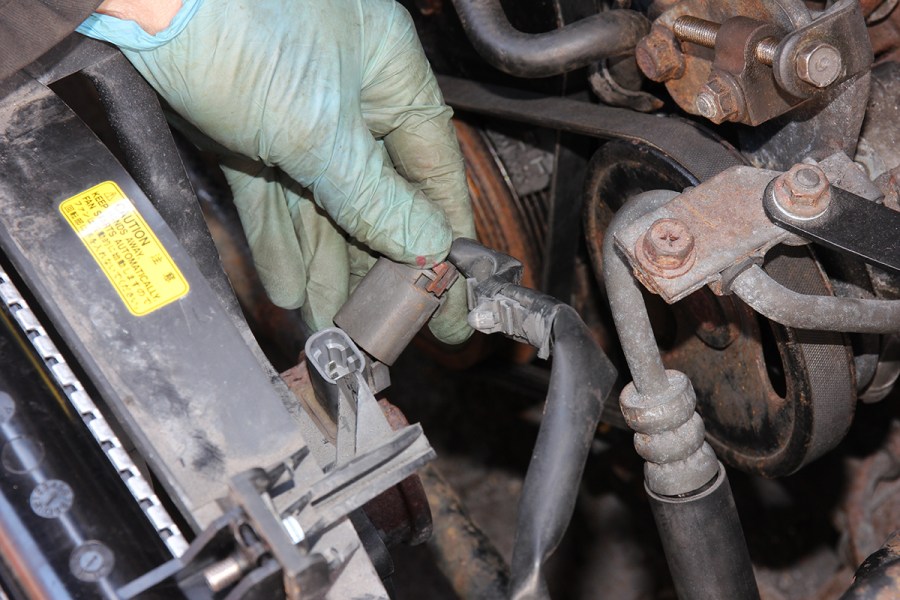
3. Detach electrical plugs
If an electric fan is secured to the radiator, it may be easier to remove them together. They can then be separated afterwards and the fan transferred to the new radiator. At this stage, look for any electrical wiring routed to the electric fan. Disconnect any electrical plugs to ensure the fan and radiator can be removed.
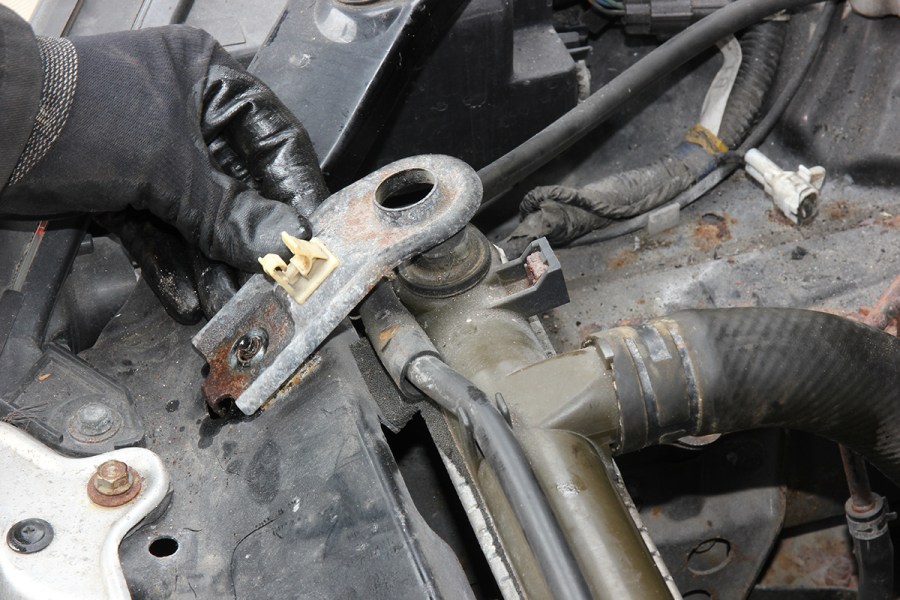
4. Undo the car radiator mounts
Most car radiators are secured with upper and lower mounts. These can be quite simple to detach. And in some cases, the lower mounts don’t need to be disturbed because the radiator sits in them. So, providing the radiator can be lifted up and out of the engine bay, the lower mounts can remain in position.
Upper radiator mounts may need to be undone and removed. They are often secured to something solid, such as the slam panel.
Look around the radiator to see how it’s secured. Try to move it to find out what needs to be undone to be able to lift it out.
Other objects may obstruct removal of the radiator. For instance, there may be a piece of trim, part of the induction system or even an intercooler. In some cases, the front bumper may need to be removed to provide space to extract the radiator.
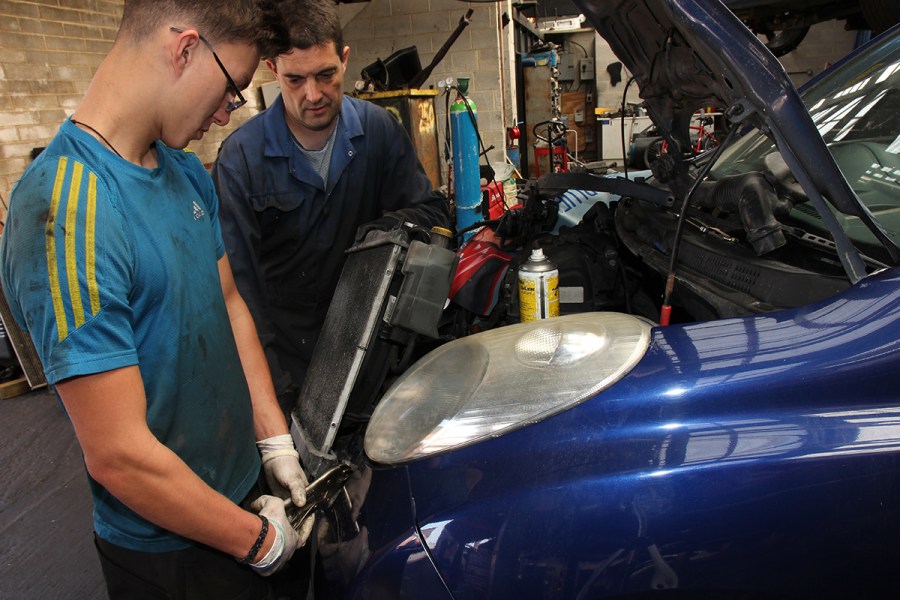
5. Remove the old car radiator
When you are confident the old radiator can be removed, lift it out slowly. Check around it to ensure you don’t damage anything. It may not matter so much to damage the radiator, but you don’t want to break anything else. Some coolant may leak out when removing the radiator, so have a container ready. Hoses may need to be fully released once the radiator has been lifted out.
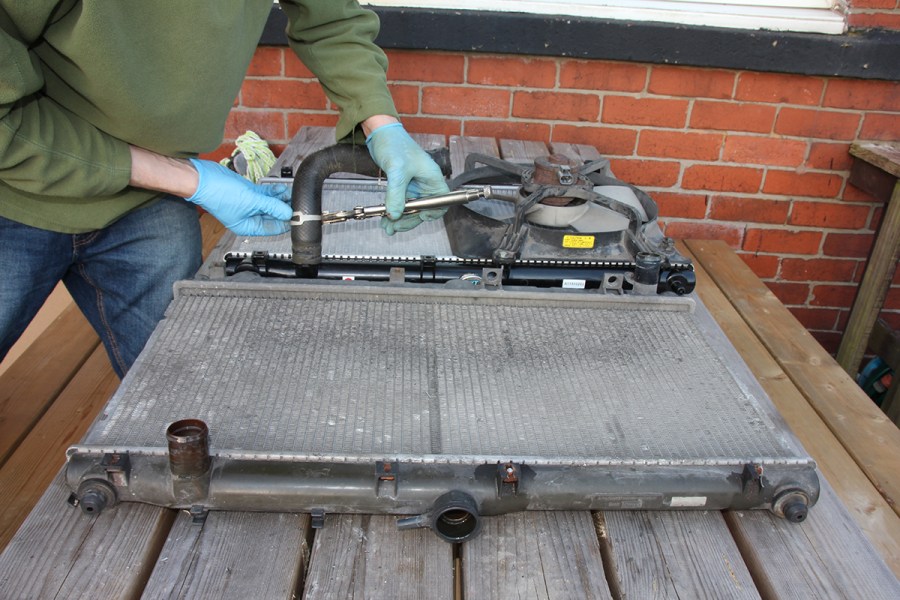
6. Transfer parts to the new car radiator
If you have the new radiator ready to fit, check it’s the same size and shape as the old one. Transfer any parts from the old radiator to the new one. This may include the electric cooling fan if it’s secured to the radiator – check the fan can spin freely after fitting.
It may help to fit some of the cooling hoses attached to the radiator. This will certainly help if they are awkward to access when the radiator is fitted.
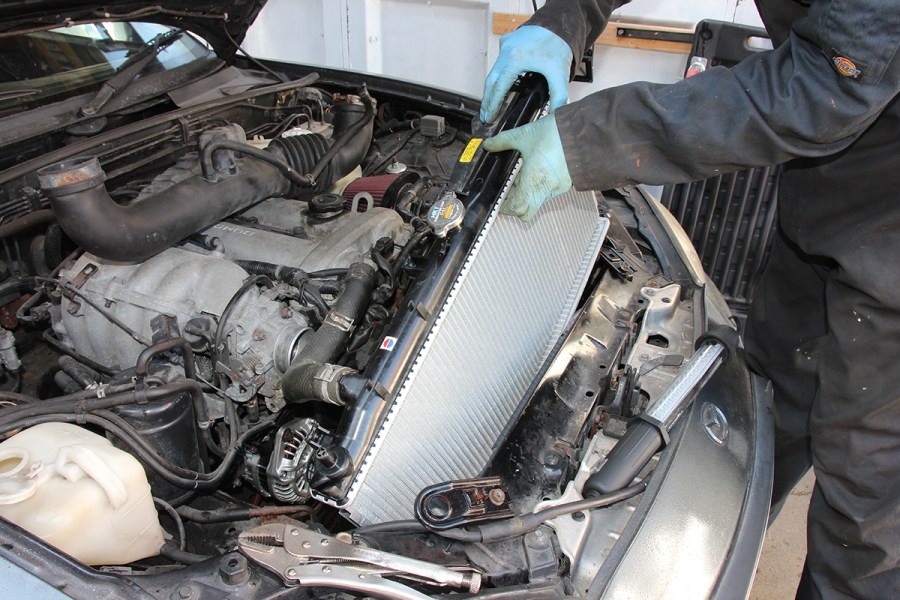
7. Fit the new car radiator
Carefully maneuver the new radiator into the engine bay or wherever it should be fitted. Avoid damaging the cooling fins on objects nearby. The fins can easily get crushed, so it may help to fit a sheet of cardboard across them. However, make sure you can extract that cardboard once the radiator is fitted.
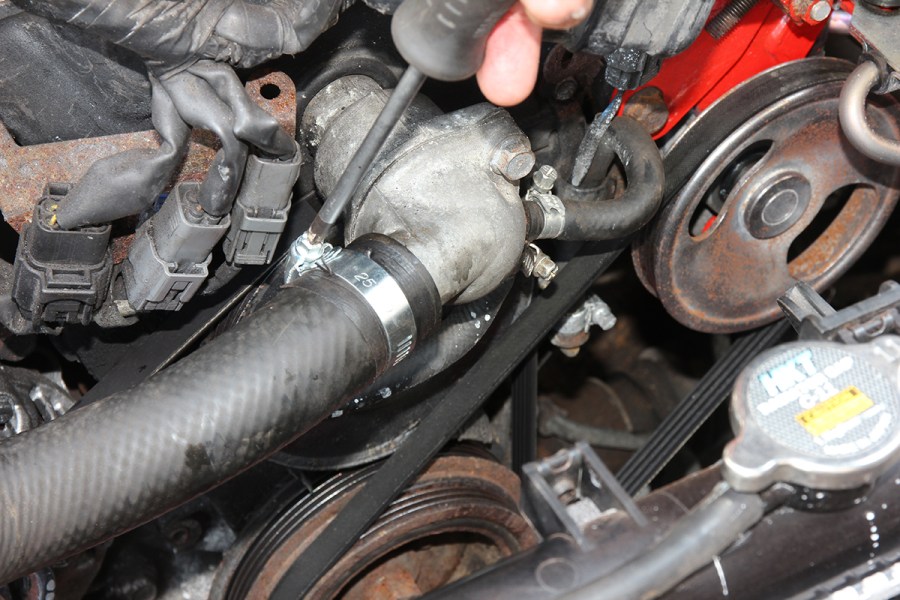
8. Refit the hoses
It may help to have a little movement in the radiator to attach any hoses, so don’t refit any mounts yet. Instead, make sure all hoses and any electrical plugs for the cooling fan can be connected. Then refit the radiator mounts and anything else.
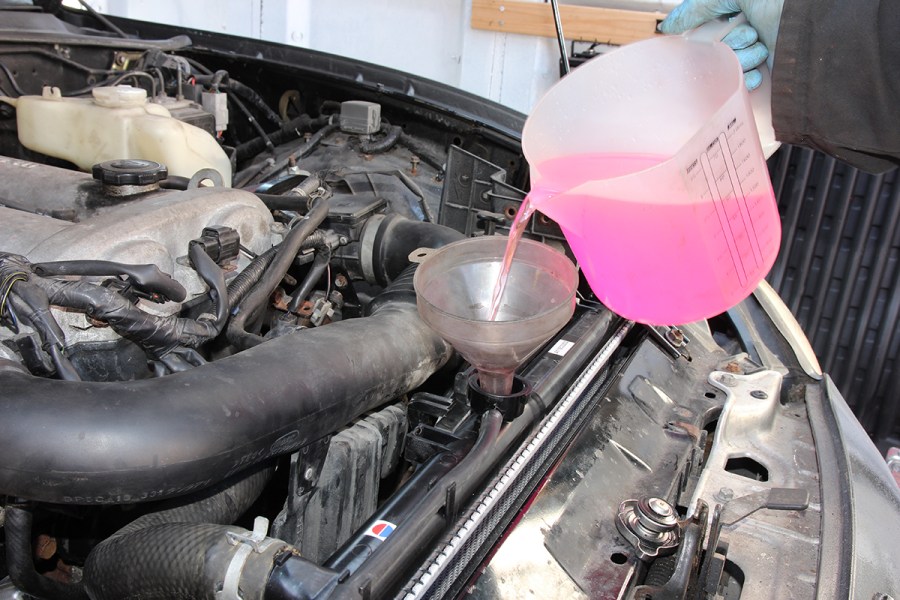
9. Refill coolant in car radiator
Finally, refill the engine coolant and bleed the system. And that’s how to change a car radiator. This can be quite an involved job, so it may help to read our separate guide on How To Bleed a Car Radiator.

